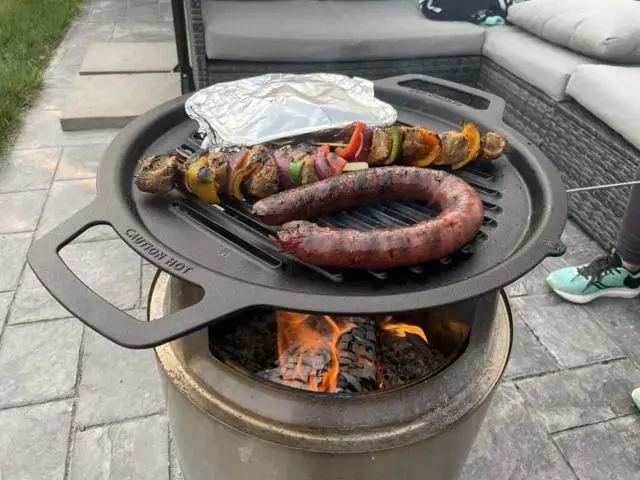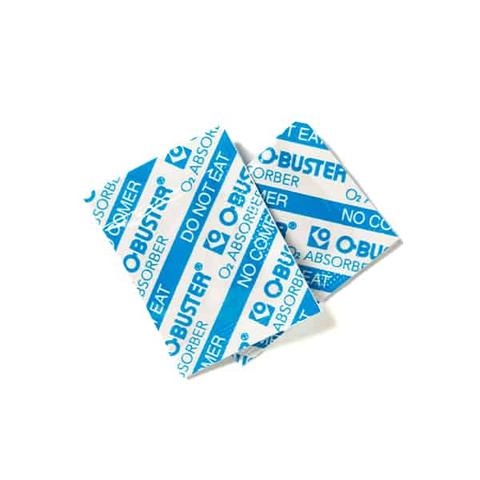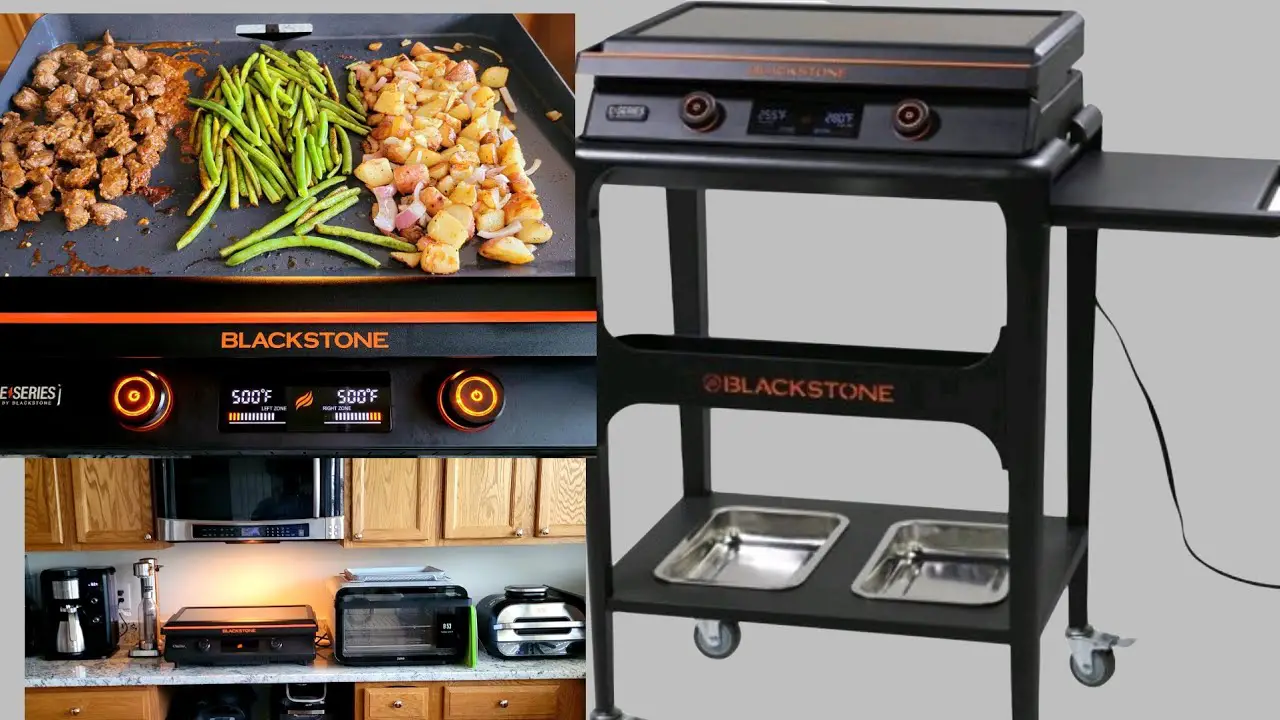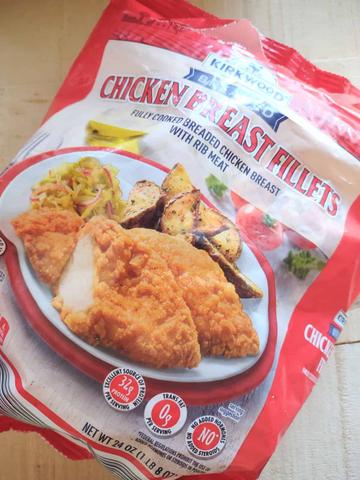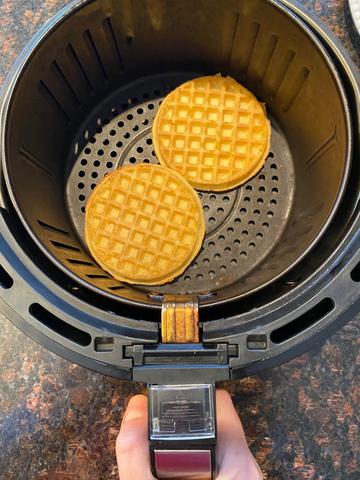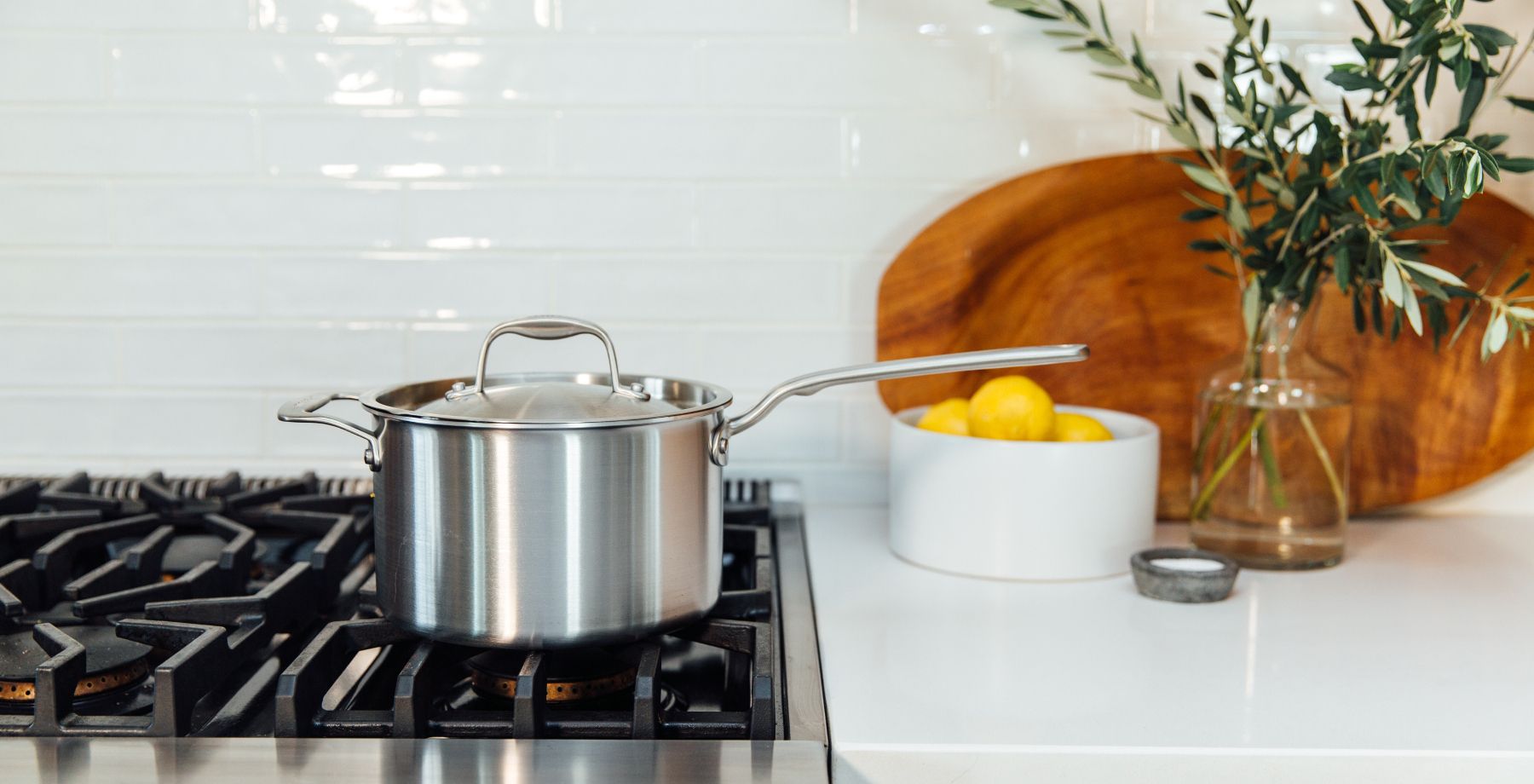
A saucepan is a key piece of cookware that every kitchen should have. This essential piece of equipment is used for everything from boiling water to making sauces. So what is a saucepan, and what can you use it for? Keep reading to find out!
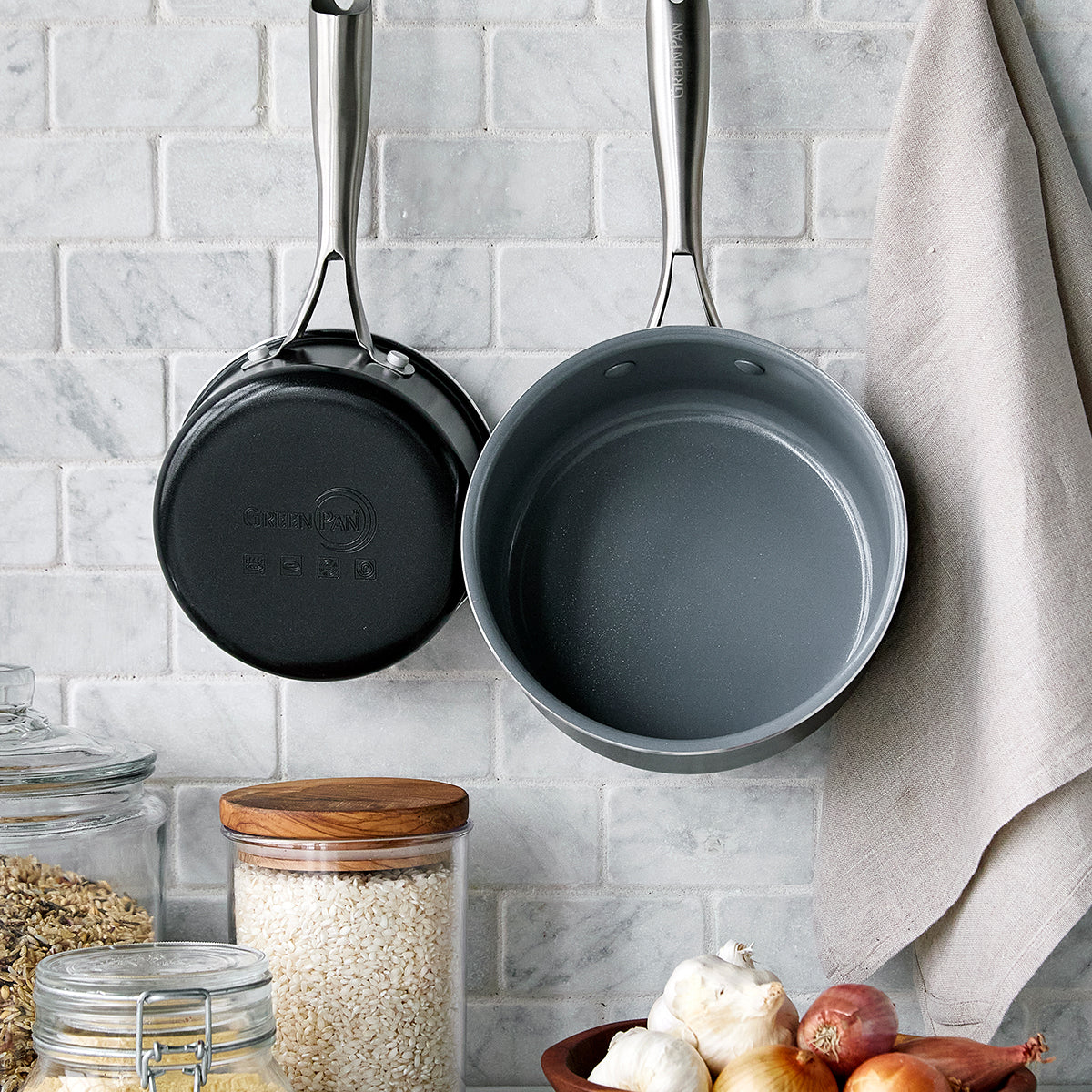
What is a saucepan?
A saucepan is a piece of cookware that functions as a small, deep pot for cooking liquids on a stovetop. It’s deeper than your standard sauté or frying pan, but shallower than the stockpot!
The saucepan is a type of pot that functions primarily as an efficient, deep cooking vessel for liquids on the stovetop. This pan has flat bottoms and steep sides with straight edges like those found in other types such as sauciers or frying pans; however, it also possesses long handles to allow users more control when whisking ingredients inside this device without spilling anything!
Saucepan Shape:
A saucepan has a distinct shape: It’s deep with high sides and straight edges, and usually features a long handle and, quite often, a lid. Its surface area is generally small relative to its height, allowing heat to be evenly distributed through the liquid in the pan.
A saucepan’s height is one of its main selling points since it allows a high volume of liquid to be contained in a small area. This is ideal for sauces, stocks, and other dishes that require a large amount of liquid.
Size: Saucepans come in a variety of sizes, but the most common size is 1-4 quarts. This size is large enough to make a small batch of soup or sauce, but not so large that it’s difficult to maneuver.
Material: Most saucepans are made from metals like aluminum or stainless steel. These materials conduct heat well and are durable. Some higher-end saucepans are made from copper, which conducts heat even better than other metals. However, copper can be expensive and require more care than other metals.
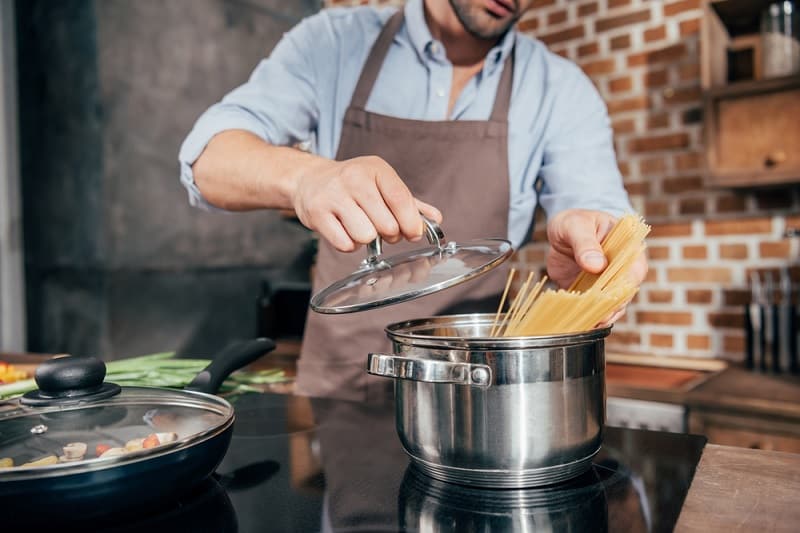
Uses of Saucepans:
- Cooking sauce: A saucepan is a perfect size and shapes for cooking sauce. The deep sides and small surface area make it easy to whisk the sauce without making a mess, and the long handle keeps your hand away from the heat.
- Boiling liquids: A saucepan is also great for boiling liquids. The high sides and small surface area help the liquid come to a boil quickly, and the long handle makes it easy to remove the pan from the heat when the liquid is ready.
- Blanching vegetables: You can also use a saucepan to blanch vegetables. The deep sides make it easy to submerge the vegetables in boiling water, and the long handle makes it easy to remove them from the heat when they’re done.
- Making soup: A saucepan is a perfect size for making small batches of soup. The deep sides and small surface area help the soup come to a boil quickly, and the long handle makes it easy to remove the pan from the heat when the soup is ready.
- Poaching: Poaching is a cooking method where food is cooked in liquid. The deep sides of a saucepan make it easy to submerge the food in the liquid, and the long handle makes it easy to remove the pan from the heat when the food is cooked.
Tips for Choosing a Saucepan:
- Consider what you’ll be using it for: When choosing a saucepan, think about what you’ll be using it for most often. If you’re mainly going to be cooking sauce, choose a saucepan with deep sides. If you’re mainly going to be boiling liquids, choose a saucepan with high sides.
- Consider your budget: Saucepans can range in price from $20 to $200. If you’re on a budget, choose an aluminum or stainless steel saucepan. If you’re willing to spend more, consider a copper saucepan.
- Consider the size: Saucepans come in a variety of sizes, from 1 quart to 4 quarts. Choose a size that will fit your needs. If you’re only going to be making small batches of soup or sauce, choose a 1-quart saucepan. If you’re going to be making larger batches, choose a 4-quart saucepan.
- Consider the material: Most saucepans are made from aluminum or stainless steel. These materials conduct heat well and are durable. Some higher-end saucepans are made from copper, which conducts heat even better than other metals. However, copper can be expensive and require more care than other metals.
- Consider the brand: When choosing a saucepan, it’s important to consider the brand. Some brands are known for their quality, while others are known for their budget-friendly prices. Do your research and choose a brand that you trust.

Saucepan Drawbacks:
The first, as previously mentioned, is its limited size. A saucepan is simply not large enough to cook a meal for a family. If you’re having lots of people over for dinner, you’ll need to use multiple saucepans or get a larger pot.
The second drawback is that saucepans can be difficult to clean. The deep sides and small surface area make it hard to reach all of the nooks and crannies, and the long handle can make it difficult to fit the pan in the sink.
The third drawback is that a saucepan requires frequent stirring and runs a constant risk of food burning and sticking — whether it’s nonstick or not . . This is because the corners at the bottom of a saucepan are generally straight, often near a 90-degree angle. This shape concentrates heat in those corners, causing food to burn easily. To avoid this, you need to stir constantly, which can be tedious. And even if you do stir frequently, there’s still a risk that food will stick and burn.
What About a Saucier?
A saucier is a type of saucepan with sloped sides, which makes it easier to stir and whisk ingredients. The sloped sides also make it easier to pour liquids out of the pan. A saucier is a good choice if you want something that’s between a saucepan and a skillet in terms of size and shape. However, sauciers can be more expensive than saucepans, and they’re not always necessary. If you’re on a budget or only need a basic pan, a saucepan will suffice.
Similarities:
Saucepans and sauciers are both types of pans with deep sides. They’re both used for cooking sauce, soup, and other liquids. They’re both available in a variety of sizes, materials, and brands.
Differences:
The biggest difference between saucepans and sauciers is the shape of the sides. Saucepans have straight sides, while sauciers have sloped sides. This makes it easier to stir and whisk ingredients in a saucier. The sloped sides also make it easier to pour liquids out of the pan. However, sauciers can be more expensive than saucepans, and they’re not always necessary. If you’re on a budget or only need a basic pan, a saucepan will suffice.
When to Use a Saucepan:
A saucepan is a good choice when you want to cook soup, sauce, or other liquids. It’s also a good choice when you’re on a budget or only need a basic pan. However, keep in mind that saucepans can be difficult to clean and require frequent stirring to avoid burning food.
When to Use a Saucier:
A saucier is a good choice when you want something that’s between a saucepan and a skillet in terms of size and shape. It’s also a good choice when you want a pan that’s easier to stir and whisk ingredients in. However, keep in mind that sauciers can be more expensive than saucepans.
In conclusion, both saucepans and sauciers have their pros and cons. It’s up to you to decide which type of pan is best for your needs.
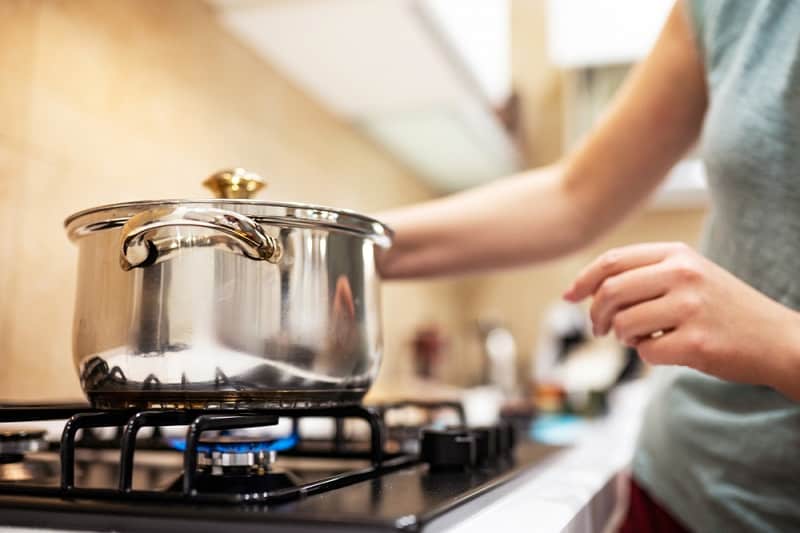
How Does a Saucepan Differ From Other Pans?
Saucepan vs. Stock Pot
A stock pot is a large pot with straight sides and a lid. It’s typically 6 quarts or larger. A stock pot is used for cooking soup, stew, chili, pasta, and other large dishes. It can also be used for boiling water. A saucepan is smaller than a stock pot and has shallower sides. It’s typically 2 quarts or less. A saucepan is used for cooking sauce, soup, and other liquids.
Saucepan vs. Saute Pan:
A saute pan is a skillet with straight sides and a lid. It’s typically 2 quarts or larger. A saute pan is used for cooking food in fat over medium to high heat. It can also be used for simmering and braising. A saucepan is smaller than a saute pan and has shallower sides. It’s typically 2 quarts or less. A saucepan is used for cooking sauce, soup, and other liquids.
Saucepan vs. Frying Pan:
A frying pan is a skillet with sloped sides. It’s typically 8 to 10 inches in diameter. A frying pan is used for cooking food in fat over medium to high heat. It can also be used for searing, browning, and sauteing. A saucepan is larger than a frying pan and has deeper sides. It’s typically 2 quarts or more. A saucepan is used for cooking sauce, soup, and other liquids.
Do I Need a Saucepan?
You don’t necessarily need a saucepan, but it can be a useful addition to your kitchen. A saucepan is a good choice if you want to cook soup, sauce, or other liquids. It’s also a good choice when you’re on a budget or only need a basic pan. However, keep in mind that saucepans can be difficult to clean and require frequent stirring to avoid burning food.
What are the Different Types of Saucepan?
Stainless Steel:
Stainless steel is a durable, heat-resistant material. It’s often used for commercial cookware because it’s easy to clean and maintain. Stainless steel saucepans are available in a variety of
Nonstick:
Nonstick saucepans have a coating that prevents food from sticking to the pan. This makes them ideal for cooking delicate foods like eggs and fish. Nonstick saucepans are also easy to clean. However, they’re not as durable as other types of saucepan and the nonstick coating can eventually wear off.
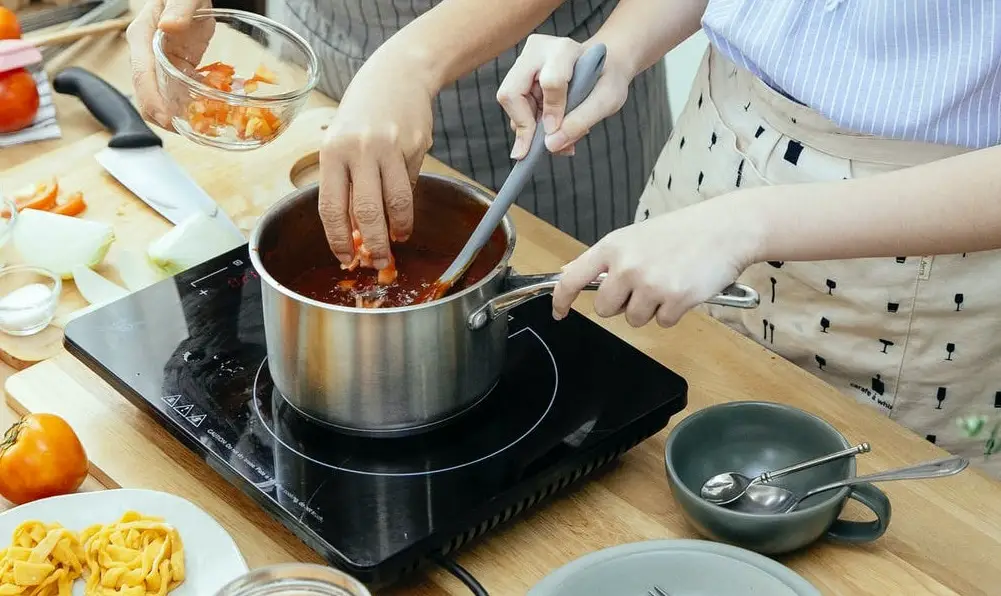
Recipes Using Saucepans:
Soup Recipes:
-Tomato soup
-Chicken noodle soup
-Beef vegetable soup
-Minestrone soup
Sauce Recipes:
-Alfredo sauce
-Marinara sauce
-Pesto sauce
-Barbecue sauce
Other Recipes:
-Mac and cheese
-Risotto
-Polenta
-Custard
Delicious recipe to cook with a saucepan:
Ingredients:
1 tablespoon olive oil
1 onion, diced
3 cloves garlic, minced
1 carrot, peeled and diced
2 celery stalks, diced
1 pound ground beef
2 tablespoons tomato paste
1 cup red wine
3 cups beef broth
1 teaspoon dried thyme
1 bay leaf
Salt and pepper to taste
1 pound pasta
1/4 cup chopped parsley
Instructions:
In a large saucepan or Dutch oven over medium heat, heat the olive oil. Add the onion, garlic, carrot, and celery and cook until softened, about 5 minutes. Add the ground beef and cook until browned. Stir in the tomato paste, red wine, beef broth, thyme, and bay leaf. Season with salt and pepper to taste. Bring the mixture to a simmer and cook for 10 minutes.
Meanwhile, cook the pasta in a large pot of boiling water according to package instructions. Drain and add the pasta to the saucepan with the beef mixture. Stir in the parsley and serve.
Fun facts about saucepan:
-The word “saucepan” comes from the French word “saucepanne,” which means “sauce pot.”
-Saucepans are typically made from materials like stainless steel, aluminum, copper, or enameled cast iron.
-Some saucepans have a nonstick coating to prevent food from sticking to the pan.
-Saucepans are available in a variety of sizes, ranging from 1 quart to 8 quarts.
-Most saucepans have a handle and a lid.
-Some saucepans also have a pour spout to make it easier to pour liquids out of the pan.
-Saucepans can be used for cooking soup, sauce, rice, pasta, and other dishes.
-To avoid burning food, it’s important to stir sauces frequently while they’re cooking.
FAQs
what is a nonreactive saucepan?
A nonreactive saucepan is made of a material that won’t react with acidic foods, such as tomatoes or citrus fruits. This prevents the food from taking on a metallic taste. Nonreactive saucepans are typically made of stainless steel, glass, or enamel-coated metals.
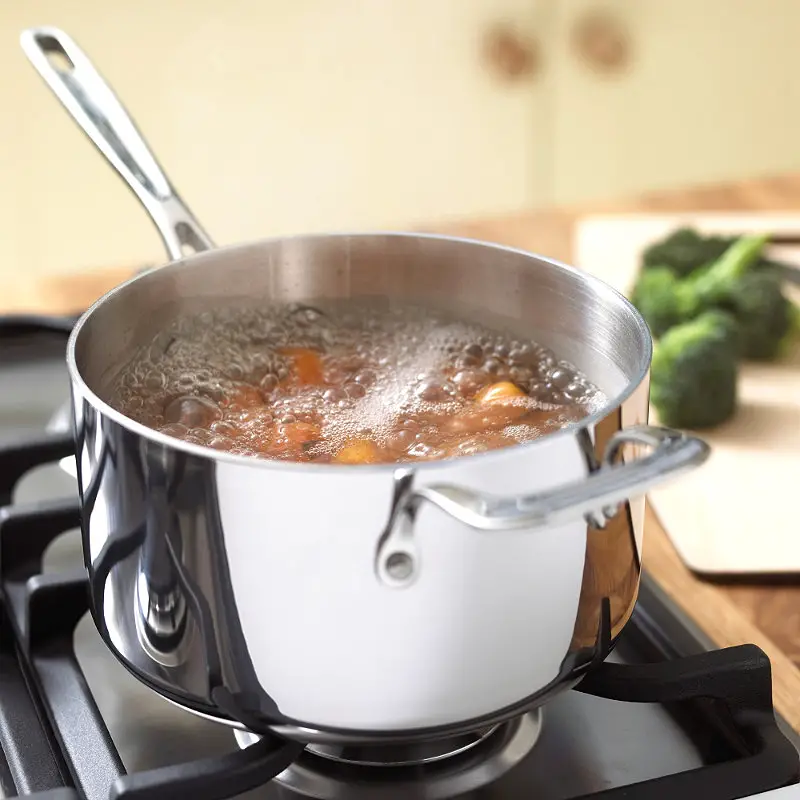
what is the best material for a saucepan?
The best material for a saucepan depends on your needs. Stainless steel is durable and easy to clean. Nonstick pans are ideal for cooking delicate foods. If you’re looking for an affordable option, aluminum is a good choice. However, keep in mind that aluminum can react with acidic foods.
what is a saucepan look like?
A saucepan typically has sloped sides and is 2 quarts or larger. It’s used for cooking liquids, such as soup, sauce, and polenta. Saucepans are available in a variety of materials, including stainless steel, aluminum, and nonstick.
what is a medium saucepan?
A medium saucepan is 2 to 3 quarts. It’s a good choice for cooking soup, sauce, and other liquids. Medium saucepans are available in a variety of materials, including stainless steel, aluminum, and nonstick.
what is a heavy saucepan?
A heavy saucepan is made of thick, heavy material. It’s ideal for cooking soup, sauce, and other liquids. Heavy saucepans are available in a variety of materials, including stainless steel, aluminum, and cast iron.
What is the difference between a saucepan and a pot?
A pot is typically larger than a saucepan and has straight sides. It’s used for cooking large quantities of liquid, such as soup or stew. Pots are available in a variety of materials, including stainless steel, aluminum, and cast iron.
what is a 3-quart saucepan?
A 3-quart saucepan is a good choice for cooking soup, sauce, and other liquids. It’s large enough to feed a family of four. Three-quart saucepans are available in a variety of materials, including stainless steel, aluminum, and nonstick.
what is a 4-quart saucepan?
A 4-quart saucepan is a good choice for cooking soup, sauce, and other liquids. It’s large enough to feed a family of six. Four-quart saucepans are available in a variety of materials, including stainless steel, aluminum, and nonstick.
Conclusion
If you’re looking for an all-purpose pot that can do it all, a saucepan is not the right choice. However, if you’re looking for a pot that’s perfect for small batches of soup or sauce, a saucepan is a good option. Just be sure to choose the right size and material for your needs, and be prepared to do some extra stirring.
Learn More About Grilling
If you want to learn more about grilling, check out these other helpful resources!

